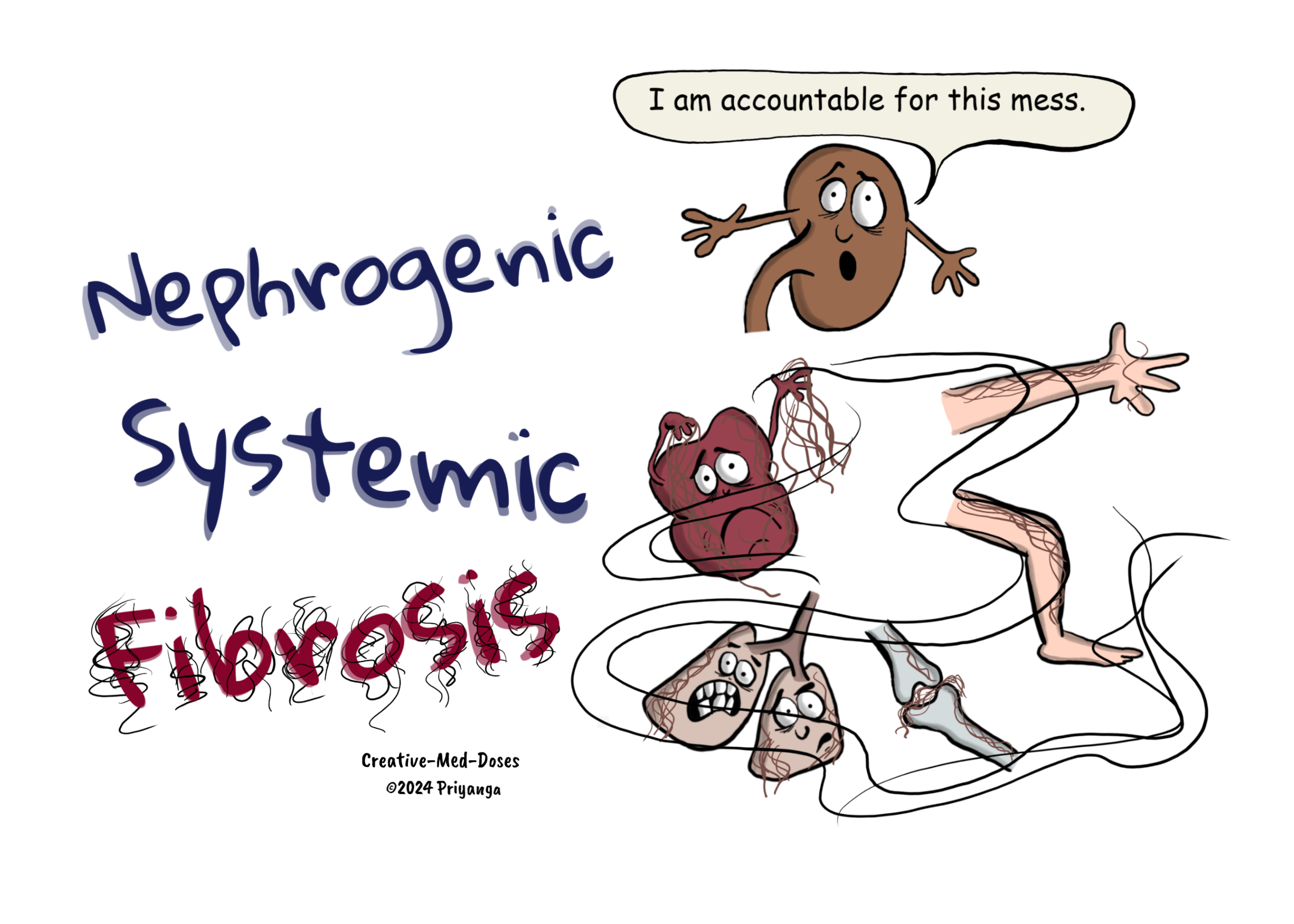Nephrogenic systemic fibrosis : (nephrogenic fibrosing dermopathy)
Nephrogenic systemic fibrosis (NSF), as the name implies, is a systemic fibrosis involving multiple organs and tissues due to nephrogenic pathology (chronic/acute renal failure).
Previously, NSF was known as nephrogenic fibrosing dermopathy because of peculiar skin manifestation detected at the time of discovery of this entity. But now it is discovered that it involves other organs and tissues, so Nephrogenic systemic fibrosis is a better term to describe the disease.
....

....
Etiopathogenesis
The exact cause and pathogenesis of NSF is unknown. The precise pathogenesis of NSF remains unknown but is believed to be multifactorial.
The following risk factors are strongly associated with triggering systemic fibrosis in NSF
- Chronic kidney disease
- Acute kidney injury
- Patients on dialysis (hemodialysis or peritoneal dialysis)
- Gadolinium-based contrast agents (GBCA) in MRI (high doses, frequent administration in short intervals)
Hypothesized pathophysiology of NSF caused by GBCAs in renal failure
Gadolinium-based contrast agents are frequently used for MRI. In cases with impaired renal function, the administration of GBCAs may trigger fibrosis.
The impairment in renal function leads to reduced elimination or renal excretion of GBCAs, resulting in the accumulation of GBCAs.
The vascular and endothelial injury associated with chronic kidney disease facilitates the gadolinium invasion into the tissues. The accumulated gadolinium chelates with iron and phosphate gets deposited in various tissues/organs. The tissue macrophages phagocytose the foreign gadolinium in order to eliminate it. The activated macrophages release cytokines and chemokines, some of which stimulate increased production of CD 34 positive fibroblasts in bone marrow. The newly produced fibrocytes come into the circulation and trigger fibrosis of various organs.
Effects of NSF on tissues commonly involved
- Scleral plaque
- Skin fibrosis, formation of papule, macule, and hardened indurated plaques
- Fibrosis of the heart, liver, and lungs
- Joint fibrosis, flexion joint contractures, and joint immobility
....

....
Clinical features
Cutaneous involvement
In the early stages of NSF, skin lesions mainly comprise itchy, erythematous, and edematous papules or nodules. Later in the disease, these papules/nodules coalesce to form hardened woody induration, sometimes giving a cobblestone appearance. In severe cases, excessive fibrosis leads to flexion contractures and decreased mobility of the affected extremity.
Systemic involvement
The deep fibrosis of visceral organs and other tissues leads to organ dysfunction and failure.
So far, abnormalities documented with NSF are-
- Cardiomyopathy
- Pulmonary fibrosis
- Liver fibrosis
- Esophageal dysmotility
- Joint and periarticular tissue fibrosis, flexion contracture, joint immobility
Revision for today Barrett’s esophagus - Creative Med Doses
Revision for today Renal Hypoxia: Why kidney is prone to hypoxia and ischemic injury? - Creative Med Doses
Buy fun review books here (these are kindle eBooks you can download Kindle on any digital device and log in with an Amazon account to read them). Have fun and please leave a review.
https://creativemeddoses.com/books/